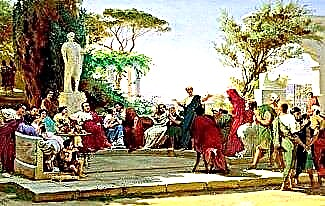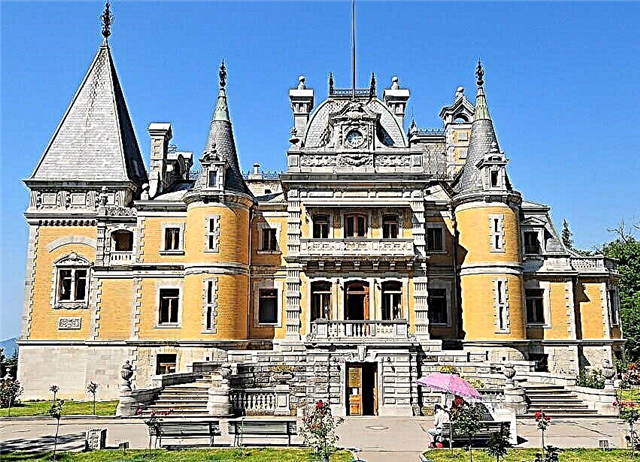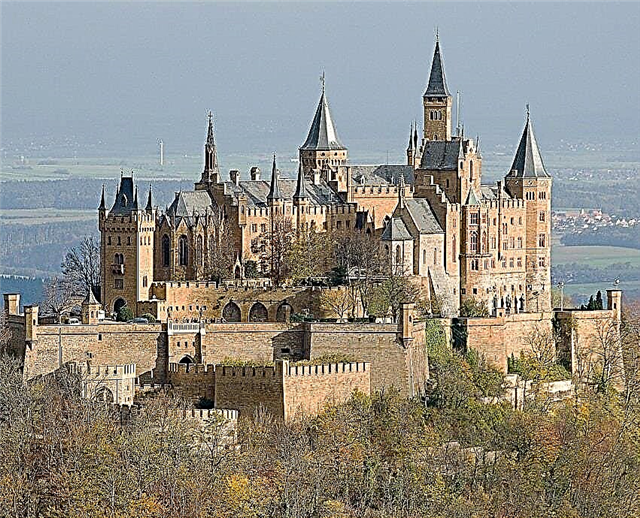Cyprus is a picturesque island in the Mediterranean Sea that consistently attracts the attention of thousands of tourists. This area skillfully combines the ruins of ancient Greek temples, remains of settlements dating back to the Stone Age, majestic Byzantine and even Gothic cathedrals. Top 20 Cyprus attractions will help you get to know the main iconic places of the island.
Kykkos monastery
Kykkos is the most famous monastery in Cyprus - a place that many tourists and pilgrims tend to visit. This church houses the miraculous icon of the Mother of God by the Apostle Luke himself. There is one more priceless shrine - the belt of the Most Holy Theotokos, which heals women from infertility.
Cape Greco
Cape Greco is a virgin area that has not been subject to human intervention. More than 400 plant species, several hundred animals and migratory birds can be found in the national park. Hunting in this area is strictly prohibited, thanks to which the natural diversity has been preserved.
Akamas National Park
Akamas is a Cyprus landmark that will impress nature lovers. These are landscapes of amazing beauty: mirror-clear water, rich coniferous forests, pebble beaches. In the national park, you can admire cyclamens, wild plums, myrtle trees, mountain lavender and other rare plants.
Tombs of the Kings
Not far from the city of Paphos, there is an ancient necropolis, where representatives of the local nobility found their last refuge. Despite its name, there are no burials of rulers in the tomb. The very first stone tombs were created at the beginning of the 4th century BC; the necropolis itself is a hollowed-out room in the rock, which are connected by passages and stairs.
Church of Saint Lazarus
This temple is one of the most frequently visited on the island, it was built in the 9th-10th centuries on the site where the tomb of the saint was located. Lazarus is known to Christians as a friend of Jesus, whom he resurrected on the fourth day after his death. His relics and a miraculous icon are still kept in the church.
Catacombs of Saint Solomon
The catacombs are a unique sacred place, partly created by nature and man. According to legend, Solomonia refused to perform Roman rites, so she and her sons hid in a cave for 200 years. At the entrance is a small pistachio tree, hung with scraps of cloth. In order for the prayer to be heard, it is imperative to leave a piece of cloth on the branches.
Hala Sultan Tekke Mosque
This landmark of Cyprus is one of the most revered in the world of Muslim culture. The mosque was built at the beginning of the 19th century, but according to legend, its history began somewhat earlier. The aunt of the Prophet Muhammad in 649 rode in that place on a horse, fell and broke her neck. They buried her with honors, and the angels brought the stone for the tomb from Mecca.
Larnaca Fort
The fortress was built in the XIV century to protect the coastline from enemy raids. But still, several centuries later, the Turks seized the land and restored the destroyed fort. Soon, the territory was taken over by the British, who founded a prison and a police station on the site of the castle. Today the fortress functions as a museum.
Choirokitia
This is the place of settlement of people who lived in the Neolithic era, that is, 9 thousand years ago. Thanks to the efforts of archaeologists, it was possible to restore the details of everyday life, as well as some historical moments. The village is surrounded by a high wall - the inhabitants had to defend themselves from someone. Where they eventually went and why they were forced to leave the settlement is a mystery to historians. The landscape of Khirokitia is also interesting. Previously, the settlement stood on the seashore, but over time, the water receded.
Paphos castle
This fortress is one of the main attractions in Cyprus. It was built by the Byzantines, but after the strongest earthquake in the XIII century it was almost completely destroyed. The fortification was restored, but already in the XIV century the Venetians dismantled it on their own so that the building would not fall to the advancing Turkish armies. After a long resistance, the Ottomans managed to capture the city, and in the 16th century they built their own on the site of the majestic castle, which has survived to this day. For a long time there was a prison within its walls, but now they conduct excursions there for numerous tourists.
Salt Lake
It is the largest lake on the island and is located near Limassol. This is a shallow, partly swampy body of water, where flocks of birds flock for the winter. Travelers can see flocks of cranes, flamingos, herons and many other rare species. In the summer heat, the salt lake practically dries up, you can even walk on foot.
Monastery of St. Nicholas
This sacred place is especially popular among cat lovers, animals have taken root there for many years. The good attitude towards the purrs is quite justified: it was they who were able to save Cyprus from the invasion of poisonous snakes in the IV century. Tourists can treat the cats with something tasty: they are especially respected within the walls of the monastery, show respect and you.
Varosha
Once Varosha was a tourist center - many hotels, restaurants, cafes were built there. But now it is an abandoned quarter in the city of Famagusta, which belongs to the unrecognized state of Northern Cyprus. During a civil coup, troops were brought into the territory, forcing residents to hastily leave the area. Since then, empty buildings remind of the former prosperity of Varosha.
The ancient city of Kourion
Kourion is an ancient settlement that contains architectural monuments from the times of Hellenism, the Roman Empire and the early Christian era. Walking through the ruins, you can see the site of the battle of gladiators, the house of Achilles, Roman baths, mosaics, the remains of the Nymphaeum fountain. The decline of the city began in the 4th century AD. e. after a series of strong earthquakes, and finally the inhabitants left it in the 7th century, when the area was captured by the Arabs.
Excavation of the city of Amathus
The ancient city of Amathus is another surviving ancient Greek settlement. Here are the ruins of the temple of Aphrodite, the acropolis, as well as authentic marble columns and ancient burials. Amathus was a prosperous city with developed trade; it was conquered by the Romans, Persians, Byzantines, Ptolemies at different times, but the final decline came during the destructive military campaign of the Arabs.
Forty Columns Castle
Forty Columns Castle is another attraction of Cyprus, which has been preserved since the 7th century AD. This fortification was built to protect the territory from the raids of the Arabs, and then was restored in the XIII century, but a strong earthquake destroyed it. The ruins were found by chance in the middle of the twentieth century: during the processing of the land plot, an old mosaic panel was discovered. During the excavations, an ancient architectural monument was discovered, from which only forty columns, intended to hold the vault, and the Byzantine gate, have survived.
Kamares Aqueduct
The Kamares Aqueduct is an ancient structure that has been used since the 18th century as an aqueduct to supply the city of Larnaca. The structure was built from 75 identical stone arches, stretches for several kilometers and reaches 25 m in height. The aqueduct functioned until 1930, but after the creation of a new pipeline it became an architectural monument.
Archbishop's Palace
Located in the capital of Cyprus - Nicosia, it is the seat of the archbishop of the local church. Built in the 20th century in a pseudo-Venetian style, next to it there is a palace of the 18th century, damaged during the invasion of the Turks in 1974. In the courtyard there is a cathedral, library, gallery.
Keo Winery
Tasting and excursion at the renowned Limassol winery is completely free. There you can taste delicious local wine, which has been produced using traditional technologies for over 150 years. After the tour, tourists are offered to buy their favorite drink.
Bath of Aphrodite
A secluded grotto decorated with plants, according to legend, is considered the place where Aphrodite met her beloved Adonis. This place is especially loved by women - they believe that water rejuvenates the body and gives a boost of vigor. The sea in this bay is cold even in the strongest heat - underground springs do not allow it to warm up. The grotto is small: its depth is only 0.5 meters, and its diameter is 5 meters.
And these are not all the attractions of Cyprus. This island is definitely worth spending as much time there as possible.









